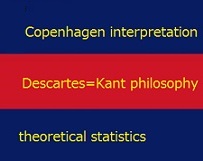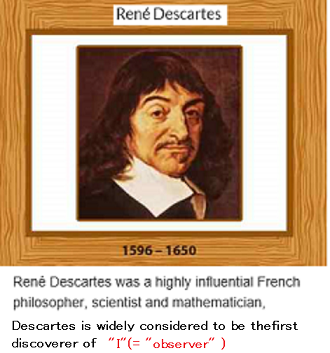1.1: Quantum language
In this website, I will establish "quantum languge (= measurement theory (=MT))", whose location in the world-views is as follows:

 The above figure ( particularly, ⑦--⑨) asserts that quantum language, roughly speaking,
has three aspects:
The above figure ( particularly, ⑦--⑨) asserts that quantum language, roughly speaking,
has three aspects:
$$
\left\{\begin{array}{ll}
\mbox{ ⑦ :the standard interpretation of quantum mechanics}
\\
\mbox{
$\qquad$
(i.e., the true colors of the Copenhagen interpretation)
}
\\
\\
\mbox{ ⑧ :
the final goal of the dualistic idealism (Descartes=Kant philosophy)
}
\\
\\
\mbox{ ⑨ :
theoretical statistics of the future
}
\end{array}\right.
$$
In this book, we mainly devote ourselves to ⑦ and ⑨ . Also, I believe that
$$
\mbox{⑧} \approx \mbox{the linguistic interpretation of quantum mechanics}
$$
therefore, the ⑧ will be discussed here and there in this book.

| $\fbox{Note 1.1}$ | [Two quantum mechanics] If most physicists feel something like metaphysics in quantum mechanics( particularly, the Copenhagen interpretation of quantum mechanics ),
the reason will be found in Fig. 1.1. That is, we consider that there are two "quantum mechanics", namely, "(realistic) quantum mechanics" in ⑤ and ”(metaphysical) quantum mechanics" in ⑩. i.e.,
$$
\mbox{quantum mechanics}
\left\{\begin{array}{ll}
\mbox{"(realistic) quantum mechanics" in ⑤}
\\
\\
\mbox{"(metaphysical) quantum mechanics" in ⑩}
\end{array}\right.
$$
The former is not completed yet. The latter is "the usual quantum mechanics" studied in undergraduate course of university. In this lecture, we are not concerned with the former.
|
